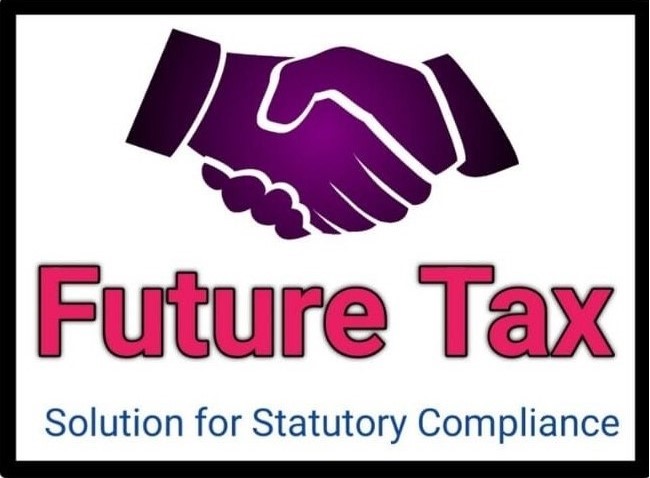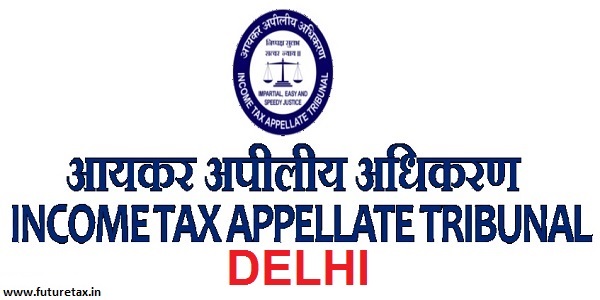
Classification of GRINDSTED PGMS 86 Under CTH 3404 in Tamil
- Tamil Tax upate News
- January 13, 2025
- No Comment
- 43
- 36 minutes read
In re Danisco India Pvt. Ltd. (CAAR Delhi)
Customs Authority for Advance Ruling (CAAR) in Delhi examined the classification of GRINDSTED PGMS 86, a food emulsifier primarily composed of propylene glycol ester (E477), under the Customs Tariff Heading (CTH) 3404. Manufactured from palm oil through esterification of fatty acids with propylene glycol, the product is combined with other ingredients like silicium dioxide, alpha-tocopherol, and citric acid to enhance properties such as anti-caking and acidity regulation. Not classified as a chemically defined compound due to the presence of residual mono- and diglycerides, the product possesses a waxy character and a drop melting point exceeding 40°C. These attributes align with the essential requirements for classification under CTH 3404, which pertains to artificial and prepared waxes.
The ruling considered the General Rules of Interpretation (GRI) and Notes to Chapter 34 of the Harmonized System of Nomenclature. It emphasized that GRINDSTED PGMS 86 meets the criteria of being a chemically produced organic product with waxy characteristics. Further, the product’s viscosity and melting point confirm its inclusion under CTH 3404 while excluding it from categories such as petroleum-based waxes under CTH 2712. This classification impacts import duties and regulatory compliance for similar food emulsifiers.
RELEVANT TEXT OF THE ORDER OF CUSTOMS AUTHORITY OF ADVANCE RULING, DELHI
Analysis and Conclusion
5. The product under consideration i.e. GRINDSTED PGMS 86 is used in food industry as emulsifiers. An emulsifier enables the creation of uniformly blended products (emulsions) from ingredients which, because of fundamental differences in their physical and chemical properties, are immiscible. Palm oil is the raw material used for the manufacturing of the subject product. Palm oil contains different types of fatty acids. These fatty acids (stearic acid) react with propylene glycol in an esterification reaction. The subject product contains residual mono and di glycerides and glycerol entities. Thereafter Silicium dioxide, Alpha-tocopherol, and Citric acid are further added for their properties of anticaking, anti-oxidant, acidity regulator and sequestrant. The physical processes of Distillation, Storage, Filtration, Tube chilling, magnet separation takes place after the chemical reactions are concluded, to get the subject product in its imported form.
5.1 The composition of subject products is as follows:
| PARTICULARS | GRINDSTED PGMS 86 | TECHNICAL FUNCTION4 | QUANTITY |
| Predominant Ingredient | Propylene Glycol Ester (E477) | Emulsifer | Approx. 96% |
| Other Ingredients | Silicium dioxide (E551) | Anticaking agent | Approx. 4% |
| Alpha-tocopherol(E307) | Anti-oxidant | Mac. 150 ppm | |
| Citric acid (E330) (dissolved in propylene glycol) | Acidity regulator, Anti-oxidant, Sequestrant | Max. 200ppm |
E numbers: It is a system of codes used within the European Union (EU) to identify food additives. The “E’ stands for “Europe” and these numbers were established by the European Food Safety Authority (EFSA) and the European Commission. E400—E499 (thickeners, stabilisers, emulsifiers).
INS Number: It stands for “International Numbering System,” are used by the Codex Alimentarius Commission. The Codex Alimentarius is a joint program of the Food and Agriculture Organization (FAO) and the World Health Organization (WHO), established to develop food standards, guidelines, and related text.
5.1.1 Food additives in India are labelled with INS numbers, and these numbers are regulated and approved by the Food Safety and Standards Authority of India (FSSAI). In the instant case both E number and INS number are same for the prominent ingredient of the product i.e. E47/INS 477. The subject product, which is used a food emulsifying agent, is pre-dominantly composed of a ‘Propylene Glycol Ester’. The chemical composition and the physical property of the subject product is captured below:
Grindsted SSL P 70 Veg
| PARTICULARS | DESCRIPTION | QUANTITY |
| Pre-dominant Ingredient | Propylene Glycol Ester (E477) | Approx 96% |
| Other Ingredients | Silicium Dioxide (E551) | Approx 4% |
| Alpha-Tocopherol (E307) | Max. 150ppm | |
| Citric Acid (E330) (dissolved in propylene glycol) | Max. 220ppm | |
| Form | Fine Powder | – |
| Physical State | Solid | – |
| Colour | White to off-white | – |
| Odor | Slightly fatty acid | – |
5.2.2 Subject product is not a separately defined chemical compound: For a better understanding of the product, reference is invited to 49th Joint FAO/WHO Expert Committee on Food Additive (“JECFA Report”) published in FNP 52 Add 5 (1997) has analysed Propane-1,2-diol esters of fatty acids INS No. 477. JECFA report defines the subject product as:
Definition: Propylene glycol esters of fatty acids are mixtures of propylene glycol mono- and diesters of saturated and unsaturated fatty acids derived from edible oils and fats. The products are produced either by direct esterification of propylene glycol with fatty acids or by transesterification of propylene glycol with oils or fats. When prepared by transesterification, the product may contain residual mono- and diglycerides and glycerol. The process may be followed by molecular distillation to separate the monoesters.
5.3 The classification of the goods imported into India is to be determined based on the General Rules of Interpretation (hereinafter referred to as the “GRI”) set out in the Tariff. As per Rule 1 of the GRI, classification of the imported products shall be determined according to the terms of the headings and any relative Section or Chapter Notes and, provided such headings or Notes do not otherwise require, according to the remaining Rules of the GRI.
5.4 Given that it has a waxy nature, it may be classified under Chapter 34, which covers, inter-alia, Artificial Waxes and Prepared Waxes. Under Chapter 34, the relevant customs tariff heading (“CTH”) that is most relevant to the classification of the subject product is CTH 34.04, which concerns Artificial waxes and prepared waxes. Before examining the classification of the subject product under CTH 3404, it is relevant to visit the Notes to Chapter 34.
5.4.1 As per Note 1 to Chapter 34 “separate chemically defined compounds” are excluded
(1) This Chapter does not cover
(a)******
(b) Separate chemically defined compounds; or.
(c) *****
5.4.2 Additionally, as per Note 5 to Chapter 34, “artificial waxes and prepared waxes” applies to:
(a) Chemically produced organic products of waxy character, whether or not water-soluble.
(b)*****
(c) *****
5.5 Further, the HSN Explanatory Notes to Heading 3404 provide for its applicability as under:
This heading covers artificial waxes (sometimes known in industry as “synthetic waxes”) and prepared waxes, as defined in Note 5 to this Chapter, which consist of or contain relatively high molecular weight organic substances and which are not separate chemically defined compounds. These waxes are :
(A) Chemically produced organic products of a waxy character, whether or not water-soluble. Waxes of heading 27.12, produced synthetically or otherwise (eq., Fischer-Tropsch waxes consisting essentially of hydrocarbons) are however excluded. Water-soluble waxy products having surface-active properties are also excluded (heading 34.02).
(B) *******
(C) Products of a waxy character with a basis of one or more waxes and containing fats, resins, mineral substances or other materials. Unmixed animal or vegetable waxes, whether or not refined or coloured, are, however, excluded (heading 15.21). Unmixed mineral waxes or mixtures of mineral waxes, whether or not coloured are also excluded
The waxes of paragraphs (A), and (C) above must have:
(1) a dropping point above 40 °C; and
(2) a viscosity, when measured by rotational viscometry, not exceeding 10 Pa.s (or 10,000 cP) at a temperature of 10 degrees C above their dropping point.”
5.6 On a combined reading of Note 5 (a), Note 1 (b) to Chapter 34 and the HSN Explanatory Notes to heading 3404, the following essential requirements needs to be fulfilled in order to classify a product under the said heading:
a. The product must not be a separate chemically defined compound;
b. The product must be chemically produced organic product;
c. The product must not be covered within the scope of CTH 271;
d. The product must have waxy character;
e. The product must have a drop melt temperature of above 40°C;
f. The viscosity of the product must not exceed 10 Pa.s at 10°C above the drop melting point.
5.6.1 The physical and chemical characteristics of the subject product are analysed against each of the above conditions, as below:
I. The subject product is not a separate chemically defined compound
5.6.1 The term separate chemically defined compounds has been defined in the Explanatory Notes to the Harmonized System of Nomenclature published by the World Customs Organization (hereinafter to be referred to as “Explanatory Notes”) for Chapter 29 (Organic Chemicals). For ease of reference the relevant definition is reproduced below:
(A) Chemically defined compounds (Chapter Note 1):
A separate chemically defined compound is a substance which consists of one molecular species (e.g., covalent or ionic) whose composition is defined by a constant ratio of elements and can be represented by a definitive structural diagram. In a crystal lattice, the molecular species corresponds to the repeating unit cell.
As already mentioned, JECFA Report provides that the subject product is not a chemically defined compound due to the presence of residual mono- and diglycerides and glycerol.
II. Subject product is waxy in nature
5.6.2 Additionally the JCEFA Report also provides that the subject product is waxy in character
III. The product must be chemically produced organic product
5.6.3 As per the manufacturing process of the subject product, it is manufactured by a chemical reaction of fatty acid (stearic acid) with propylene glycol in an esterification reaction. The resultant product contains a carbon—hydrogen bond, which is characteristic of an organic product. Hence, the subject product is a chemically produced organic product.
IV. The product must not be covered within the scope of CTH 2712
5.6.4 CTH 2712 covers Petroleum Jelly, Paraffin Wax, Microcrystalline Petroleum Wax or other mineral waxes. A simple analysis shows that the subject product is not any of these waxes. Hence, the subject product is not covered within the scope of CTH 2712.
V. Other conditions
5.6.5 A mentioned above and on physical examination of the subject product shows that it has a waxy character. The Applicant confirms that the subject product has a drop melt temperature of above 40°C. The Applicant also confirm that the subject product has a viscosity that does not exceed 10 Pa.s at 10°C above the drop melting point.
5.7 The fulfilment of above criteria by the subject product is discussed herein below:
| Requirement under CTH 3404 | Proerties of the subject product |
| The product must be chemically
· produced |
Esterification reaction between propylene glycol and fatty acid |
| The product must be an organic product other than separate chemically defined compounds defined under Chapter Note 1 to Chapter 29. | The product is not covered under the definition of separate chemically defined compound given in Chapter Note 1 to Chapter 29.. |
| The product must not be covered within the scope of heading 2712. | The subject product is not covered under CTH 2712 as it is not in the nature of Petroleum Jelly, Paraffin
Wax, Microcrystalline Petroleum Wax or other |
| The product must have waxy character. | The subject products have a waxy appearance. |
| The product must have a dropping point temperature of above 40 °C. | The subject product has a dropping point above 40°C |
| The viscosity of the product must not exceed 10 Pa.s at 10 °C above the drop melting point. | The subject product’s viscosity does not exceed 10 Pa.s at 10 °C above the drop melting point |
Classification of the subject product under CTH 3404
5.8 In view of the above, as the subject product fulfils all the conditions mentioned in Note 1(b), and Note 5 to the Chapter 34, the subject product merits classification under CTH 3404. Now, coming to the 6 digit and 8-digit classification, reliance must be placed on GRI Rule 6 which states that “the classification of goods in the sub-headings of a heading shall be determined according to the terms of those sub-headings and any related sub-heading Notes and, mutatis mutandis, to the above rules, on the understanding that only sub-headings at the same level are comparable. For the purposes of this rule the relative Section and Chapter Notes also apply, unless the context otherwise requires”. Therefore, upon application of GRI Rule 6 read with GRI Rule 1, the classification of subject products must be determined according to the terms of sub-headings. In view of the above, reference must be made to the description mentioned at sub-heading level. It is also pertinent to mention that as per GRI, descriptions of the goods provided under “-“(single dash) are first to be considered for sub-classification under a heading first, before proceeding to further classify under “- -” (double dash). Articles whose description are preceded by a “—” (triple dash) or “—” (quadruple dash) are sub-classifications of the immediately preceding single dash or double dash, as the case may be.
5.8.1 Therefore, the classification of the subject goods must be first determined at the single-dash level. In this regard, it is evident that CTH 3404, has been sub-divided into:
| CTH | Description | Unit | Rate of Duty |
| (1) | (2) | (3) | ( 4) |
| 34042000 | – Of poly (oxyethylene) (polyethylene glycol) | Kg | 10% |
| 340490 | – Other |
5.8.2 The subject product is not made up of Polyethylene glycol (PEG). Accordingly, the subject product will be classified under the residuary entry, i.e., CTSH 3404 90 which reads as “Other”. Now, upon perusal of the single-dash entry- “Other”. The entry is sub-divided into the following:
| CTH | Description | Unit | Rate of
Duty |
| (1) | (2) | (3) | (4) |
| 34090 | -Other | ||
| 34049010 | —Sealing wax (including bottle sealing wax) in sticks, cakes or similar forms | Kg | 10% |
| 34049020 | — Polyethylene wax | Kg | 10% |
| –Artificial waxes (including water soluble waxes ) prepared waxes , not emulsified or containing solvents | |||
| 34049090 | —Other | Kg | 10% |
5.8.3 Basis the understanding of the facts and the analysis discussed so far, it is clear that CTI 34049010 and CTI 34049020 are excluded. Now moving to the next — dash i.e. Artificial waxes (including water-soluble waxes) prepared waxes, not emulsified or containing solvents”. The subject product is in the nature of artificial wax, not soluble in water. Further, the product in is as imported form is neither emulsified nor contains solvents. Accordingly, the subject product appears to fall within the scope of “Artificial waxes (including water-soluble waxes) prepared waxes, not emulsified or containing solvents”. The said entry is further sub-divided under:
| CTH | Description | Unit | Rate of Duty |
| (1) | (2) | (3) | (4) |
| 34049031 | —-Poly brominated biphenyls | Kg | 10% |
| 34049032 | —-Poly chlorinated biphenyls | Kg | 10% |
| 34049033 | —-Poly chlorinated terphenyls | Kg | 10% |
| 34049039 | –Other | Kg | 10% |
5.8.4 The subject product has not undergone bromination or chlorination during its production. We understand that the subject product in its ‘as imported’ form contains neither bromine nor any chlorine. Thus, the subject product is not classifiable under CTIs 34049031, 34049032 or 34049033. Hence, the subject product merits classification under CTI 3404 90 39.
5.9 Vide letter dated 02.12.2024, the Port Commissionerate has stated that the subject product can either be classified under CTH 3404 or CTH 3824 depending on whether it meets the character of artificial waxes or otherwise and that accordingly, the compliance of the subject product to various conditions set forth for classification under CTH 3404 needs to be examined.
5.10 Considering the subject product is pre-dominantly composed of Propylene Glycol Ester and has a waxy nature it shall be classified under Chapter 34, which covers, inter alia, “Artificial Waxes and Prepared Waxes” under Customs Tariff Heading (hereinafter referred to as “CTH”) 3404. Further, relevant Chapter Notes and Harmonised System of Nomenclature Explanatory Notes (hereinafter referred to as “HSN EN”) which have been held to be a safe guide for the determination of the correct classification in a catena of judgments, are extracted below for ready reference:
“Chapter Note 1 This Chapter does not cover:
(a) ….
(b) separate chemically defined compounds; or
(c) ….”
“Chapter Note 5 In heading 3404, subject to the exclusions provided below, the expression “artificial waxes and prepared waxes” applies only to:
(a) Chemically produced organic products of a waxy character, whether or not water-soluble;
(b)…..
(c) products of a waxy character with a basis of one or more waxes and containing fats, resins, mineral substances or other materials…”
HSN EN to CTH 3404:
This heading covers artificial waxes (sometimes known in industry as “synthetic waxes”) and prepared waxes, as defined in Note 5 to this Chapter, which consist of or contain relatively high molecular weight organic substances and which are not separate chemically defined compounds. These waxes are :
(A) Chemically produced organic products of a waxy character, whether or not water-soluble. Waxes of heading 27.12, produced synthetically or otherwise (eq. Fischer-Tropsch waxes consisting essentially of hydrocarbons) are, however, excluded. Water-soluble waxy products having surface-active properties are also excluded (heading 34.02).
(B) …
(C) Products of a waxy character with a basis of one or more waxes and containing fats, resins, mineral substances or other materials. Unmixed animal or vegetable waxes, whether or not refined or coloured, are, however, excluded (heading 15.21). Unmixed mineral waxes or mixtures of mineral waxes, whether or not coloured are also excluded (heading 27.12)….
……
The waxes of paragraphs (A), and (C) above must have:
(1) a dropping point above 40 °C; and
(2) a viscosity, when measured by rotational viscometry, not exceeding 10 Pa.s (or 10,000 cP) at a temperature of 10 degrees C above their dropping point.
……..
Apart from the exclusions mentioned above, the heading does not cover
(f) Mixtures of mono-, di- and tri-, fatty acid esters of glycerol, not having the character of waxes (heading 38.24).”
5.11 Each of the above-listed conditions are dealt with specifically as under:
| The subject product is not a Separate Chemically Defined Com •ounds
|
The presence of residual mono- and diglycerides and glycerol bars the subject product from the scope of the definition of a Separate Chemically Defined Compound as prescribed under HSN EN to Chapter 29.
The subject product does not have a definitive structure as the `1:21′ and `R2′ as captured in the structural diagram hereinabove represent one fatty acid moiety and hydrogen in the case of mono-esters and two fatty acid moieties in the case of di-esters. The same is outline in the JECFA Report |
| The product must be chemically . rod uced organic product
|
As distilled hereinabove, the manufacturing process of the subject product involves a chemical reaction i.e. esterification reaction of fatty acid with propylene glycol.
The resultant product contains a carbon-hydrogen bond, which is a characteristic of that product being an organic product. Reliance in this regard is placed on the definition of an “organic compound” as outlined by Britannica Technical Dictionary5 which is extracted below: “organic compound, any of a large class of chemical compounds in which one or more atoms of carbon are covalently linked to atoms of other elements, most commonly hydrogen, oxygen, or nitrogen.” |
| The product must not be covered within the scope of CTH 2712 The subject product is waxy | CTH 2712 covers “Petroleum, Jelly, Paraffin Wax, Microcrystalline Petroleum Wax or other mineral waxes”. A bare perusal of the terminology of the CTH 2712 is apparent to conclude that subject product is out of the scope of the waxes covered by CTH 2712.
The subject product is waxy in nature. Reliance for the same is placed on the JECFA Report which describes the subject product as “White or cream coloured solids of waxy appearance, plastic products or viscous liquids” |
| in nature
|
|
| The product must have a drop melt temperature of above 40°C and viscosity not exceeding 10 Pa.s at 10°C above the drop _melting point | The subject product has been tested at the Grindsted Plant of Danisco, which is accredited to BRCGS, Global Standard for Food Safety Issue 9 in Denmark.
The said test report certifies the following: 1. Dropping Point of the subject product: 48°C 2. Viscosity: 0.0152 Pa.s when measured by rotational viscometry at a temperature of 10°C above its dropping point |
In light of the above, it is submitted that the subject product fulfils all the conditions set forth by the comb.ned reading of Chapter Note 1(b) and 5(a) to Chapter 34 and the HSN EN to be adequately covered under CTH 3404 and merits classification under CTI 3404 90 39.
6.a. Question: Whether the products in question in the present application are classifiable under Tariff Item 3404 90 39?
Answer: Yes.
b. Question: If the answer to the above question is in the negative, then what would be the correct classification of the products mentioned above under the Customs Tariff of India? Answer: Not Applicable
7. I, rule accordingly.
(Samar Nanda)
Customs Authority for Advance Rulings




